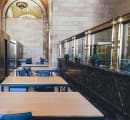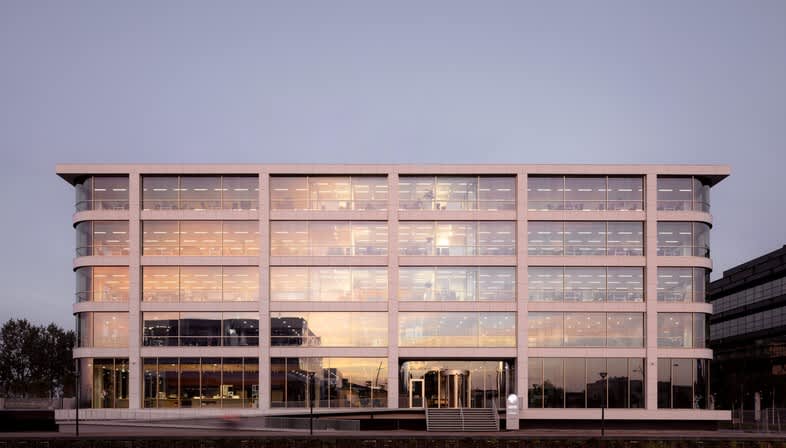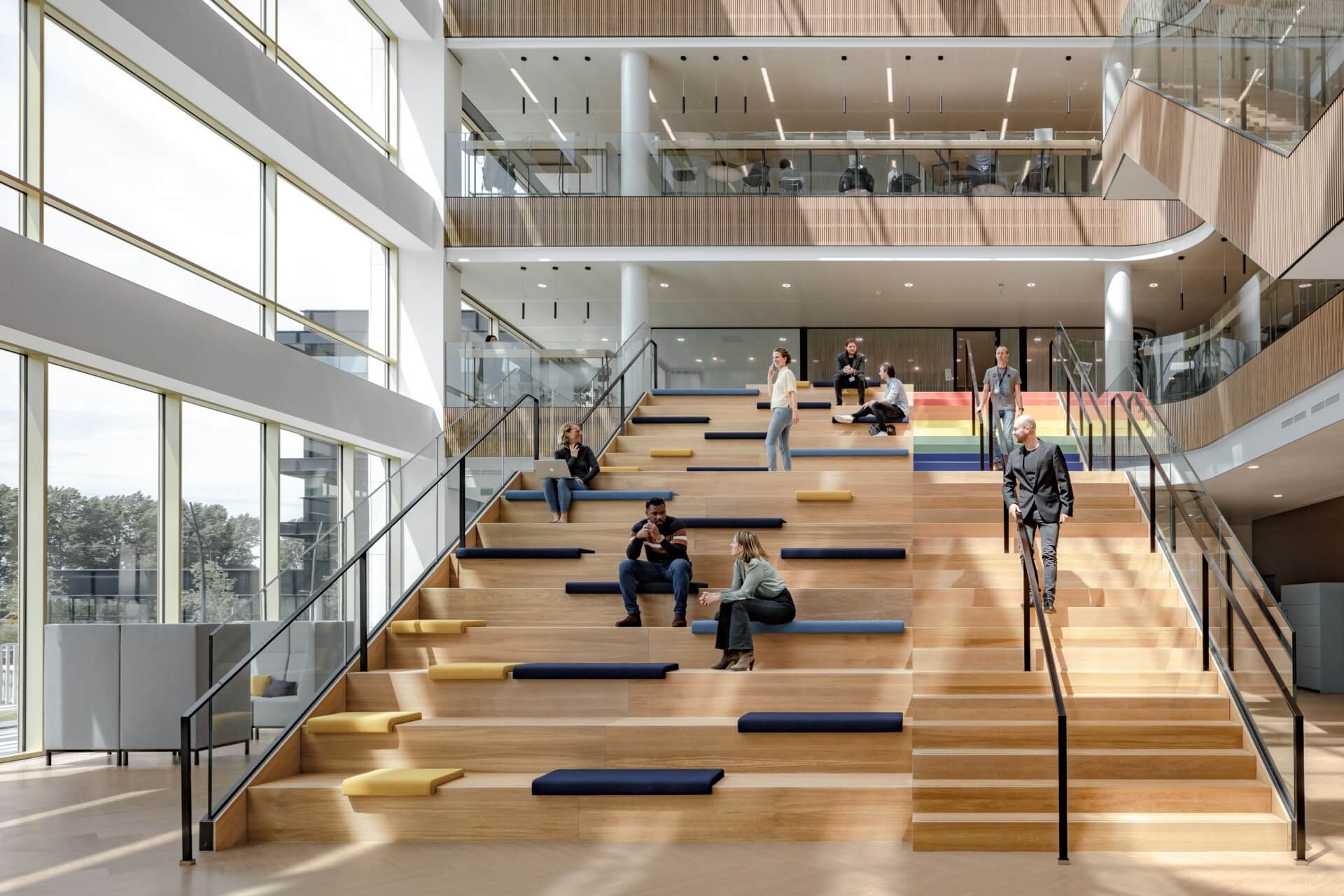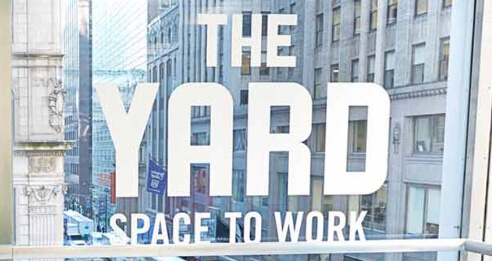
Largest Coworking Companies


Building a smart workspace has long been the focus of many coworking spaces and individual businesses in order to maximize productivity while still providing a comfortable and efficient space for occupants.
Danone, the food corporation with over 100,000 employees worldwide, recently undertook the relocation of their Amsterdam HQ, one of the company’s three global headquarters. At the SWDExpo, Coworking Resources had the chance to speak with Nick Van Der Kloor - HR Site Manager - about the project to better understand what the main challenges and accomplishments of the project were and what others can learn from it.
The project started with the fact that our contract at the World Trade Center in Amsterdam was expiring and we had to make the choice of renewing it or not. It was a very convenient location in terms of traveling and commuting, very close to the airports, and since we have lots of employees coming from all over the world that was a big advantage. But on the other hand it was not matching our needs in terms of space design. Not many big changes had taken place in the previous 10 years, so we knew we would have to either invest in a big renovation, or find a new home for us, and we chose the latter.

Our goal was to create sustainable and healthy working environments that matched our culture. Our purpose is to do good for the planet and good for the employees, and that’s where the vision for our project had to start.
Our previous location was split between two towers, eight floors in one and a few more in the other, so it was a multi-tenant building. It was a very traditional setup with around 650 fixed desks, a number of meeting rooms and open spaces but nothing that allowed us to be as flexible and dynamic as we wanted to be. The main difference in our new space was that it was customized to our needs. For instance, we significantly reduced the number of desks in order to accommodate different types of workstations, and we made sure that the design reflected our company culture.
For us the two main challenges were time constraints and coordination among different stakeholders. We had a fixed date that we had to leave the World Trade Center so everything about our project, from design planning to contractual conditions had to reflect this strict deadline. The other aspect was related to managing responsibilities and decisions across stakeholders.
The core team that was fully dedicated to the project consisted of me as the change manager, the project director, and a communication coordinator. Aside from those, other roles were actively involved in the project, including our Finance Director, HR Director, IT and so on.
We had a dedicated board for the office to which the project team reported to, but we also had to combine our planning with our project partners. We worked with Cushman & Wakefield as advisors, with an external architecture firm, and we had a lot of subcontractors, so many companies were involved in the project and we had to make sure everything happened within our timeline.
Subcontractors reported to the project management developer who worked hand in hand with our own project director.
We started by analyzing how our employees work. We had a 9-week study, a survey among employees and 2 focus groups of 50 people each, in order to understand how people work, what’s their behaviour in the workplace and what their needs are. We know that for most people, 80% of the time is spent on meetings, and only 20% behind the desk, so how we designed our office had to reflect this. We also know that many of those meetings are informal and don’t necessarily require a room. We came to the conclusion that we had to provide 1,100 work stations throughout the entire building, to make sure there was room for everyone, and provide variety in terms of the type of seats. We had 70 different types of seats and we showed all the new types of spaces that employees could use, so that the limited number of flexdesk was more than compensated by the variety of new options. We also wanted to make sure that people still had some feeling of belonging by having departments usually taking flex desks on a certain floor or area, therefore maintaining maximum flexibility but giving employees the chance to more easily find the colleagues they work the most with.
2020 Global Coworking Growth Study
Find the latest U.S. and international coworking statistics!
Communicating what’s new and the benefits of the new setup was a big part of the project, and that’s why we had a dedicated communication coordinator. I think the important thing is to keep things simple. For instance we suggested the golden rule that if you are going to work for more than 2 hours, you take a flex desk, if it’s less you should work from any other space. The second rule was to avoid “checking in” at a flex desk in the morning but just start working from whichever space made more sense depending on their schedule.
If we had more time we should have had a longer “onboarding” phase for our employees and put more focus on the transition, but we are now more active in terms of reminding people of the rules and monitoring how employees are using the space. We are implementing four office energizers, one on each floor, that are in between the facility team and their teams and take a bit more ownership in the area.
We have a smart building infrastructure that lets us gather data and we are also using a software solution for the end user, in our case it’s Mappic, which helps the employees but also allows us to gather data on how the space is used. For instance, if we see that 30% of the meeting rooms is unutilized, we can show our employees that the idea that you can never find a meeting room is not because of lack of space but maybe other factors (like no shows for instance) and making them part of understanding how the office works.

It depends on the company. A law firm most likely has very different needs than a tech startup, so the idea should not be to follow the examples of what larger companies have done, but rather to understand what your own people need and reflect that in your project.
How do my people work? How do we see the future? How can we increase productivity? Those are the questions to ask, how to enable people so that they can enable the business. If you are a company of 50 people, make sure to carry out a study on what they need, I am sure those 50 people, even if they work in a similar function, will have different needs and backgrounds, so that’s the main thing to keep in mind.
So combining employees’ needs with the vision of senior management of where the company is going in the future is the way to shape an effective design plan.
I think the last thing to keep in mind when it comes to change management and workspace design is that things also have to be simple and fun. To give you a couple of examples we created a VR version of the office so that employees could see the space before it was open, which was super engaging for them, but another much simpler initiative was to have a pajama party the day we moved in, which was a lot of fun. Everything has to be people-centric and even small events like this one have a big impact.
Thank you so much Nick!
Save your community manager 41 hours each week—learn how The Yard did it with cloud-based access control.
Read the Case StudyFree access to our best guides, industry insights and more.
